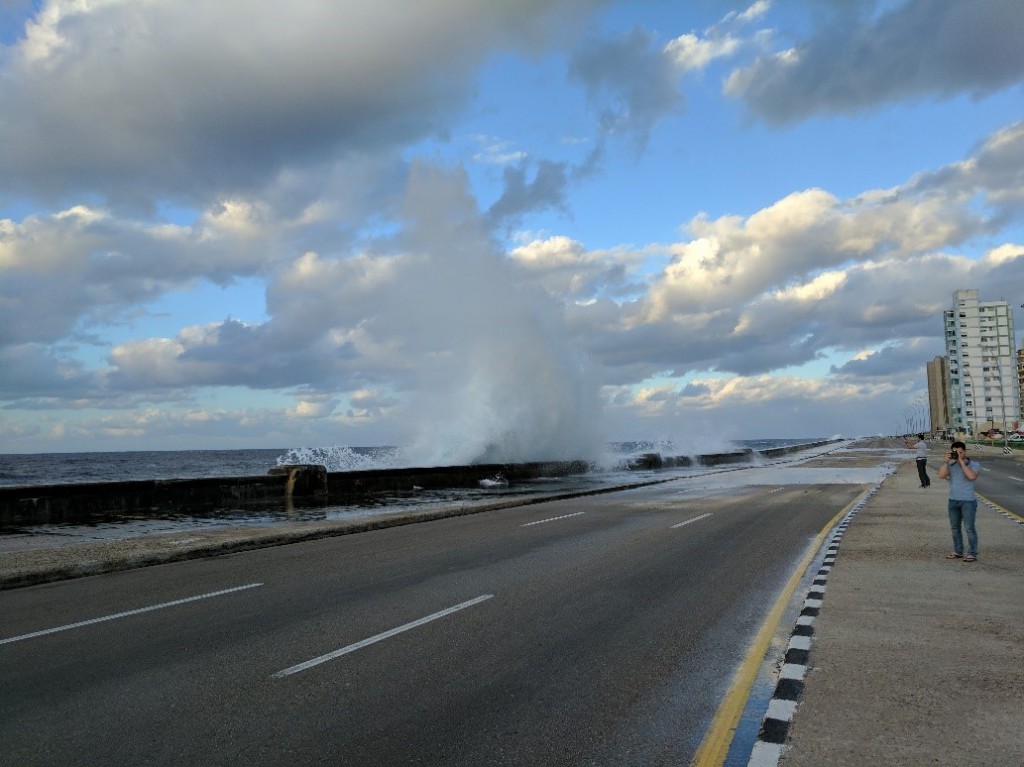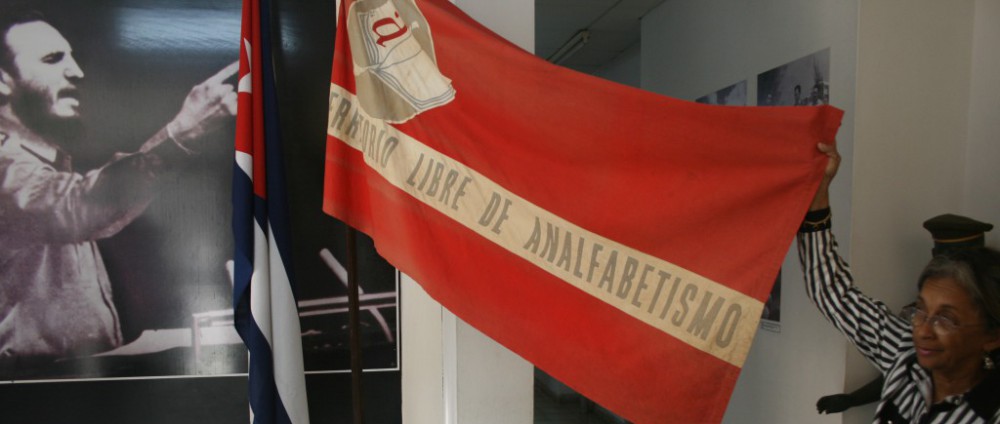After being able to sleep in for the f irst time since arriving in Havana, we traveled back into old Havana for the day to learn about Ernest Hemingway, when he visited Cuba in the 1940’s. As we drove along the Malecon, everyone watched as the waves crashed against the wall spilling over onto the road. This was the first time we witnessed the power of the ocean as it crashed into the sea wall. The winds were a result of the previous night’s storm and brought cool air in from the north. The ten foot waves hit the Malecon with enough force to send water above the tops of the streetlights.
irst time since arriving in Havana, we traveled back into old Havana for the day to learn about Ernest Hemingway, when he visited Cuba in the 1940’s. As we drove along the Malecon, everyone watched as the waves crashed against the wall spilling over onto the road. This was the first time we witnessed the power of the ocean as it crashed into the sea wall. The winds were a result of the previous night’s storm and brought cool air in from the north. The ten foot waves hit the Malecon with enough force to send water above the tops of the streetlights.
W e started off our day in Old Havana in the lobby of the Hotel Ambos Mundos, where Hemingway had always stayed before buying his house. The lobby had a pleasant atmosphere with someone quietly playing the piano by the entrance. People were scattered throughout the lobby occupying almost every seat with quite a few enjoying mojitos and other mixed drinks. The hotel seemed like a very relaxing place to stay and demonstrated the relaxing Cuban lifestyle which Hemingway enjoyed. After spending a little time in the lobby, we walked through the streets of old Havana visiting several noteworthy bars.
e started off our day in Old Havana in the lobby of the Hotel Ambos Mundos, where Hemingway had always stayed before buying his house. The lobby had a pleasant atmosphere with someone quietly playing the piano by the entrance. People were scattered throughout the lobby occupying almost every seat with quite a few enjoying mojitos and other mixed drinks. The hotel seemed like a very relaxing place to stay and demonstrated the relaxing Cuban lifestyle which Hemingway enjoyed. After spending a little time in the lobby, we walked through the streets of old Havana visiting several noteworthy bars.
Our first stop was at La Bodeguita del Medio, which is known for its mojitos. Inside there was a small band playing for the crowded room and everyone waiting to get in to get a mojito for themselves. Although they were good, my opinion was that they didn’t taste any better than any other mojito even though they cost twice as much. While waiting for the drinks to be made, we admired some of the art bring sold nearby by local vendors in small rooms or a staircase up to the second floor of a building. Most of which were paintings consisting of a Havana street with a brightly colored old car like the ones which are used for tours.
Since our day had a focus on Hemingway, we went to his favorite bar, El Floradita. The bar was extremely crowded with tourists that it made it almost impossible to walk inside to see the beautiful room with a band performing to the left as you walk in. A statue of Hemingway sits at the bar in the corner where he often enjoyed the lively atmosphere. El Floradita would have been a great place to hang out and slowly enjoy a drin k for a quiet afternoon, but due to the number of tourists it was too busy and loud. Everyone who was visiting Havana seemed to want to go to the bars which were famous to get a drink and experience Havana the way they had read about, but with all the tourists the experience was dampened. The bars unfortunately felt more like tourist attractions than anything else.
k for a quiet afternoon, but due to the number of tourists it was too busy and loud. Everyone who was visiting Havana seemed to want to go to the bars which were famous to get a drink and experience Havana the way they had read about, but with all the tourists the experience was dampened. The bars unfortunately felt more like tourist attractions than anything else.
We finished the day with a discussion about Hemingway on top of the Hotel Ambos Mundos. Fortunately, the discussion was cut short because everyone became very cold due to the wind and sixty degree temperatures (which seemed cold to us even though back home it was close to zero) that no one was prepared for. Everyone was expecting it to be warm the entire time we were in Cuba. On our way back, our bus had a slight mechanical issue, but by the time everyone had noticed, our bus driver had already opened a hatch in the floor and fixed it quickly. Since Cuba had been cut off from the rest of the world for so long it isn’t surprising that many cars break down in various place and the drivers need to know how to fix it wit hout too much trouble. Although it makes sense that anyone who owns a car would know how to fix it (more so than everyone in the United States), it still surprised me how quickly he could find and address the problem. The cold and the bus breakdown were two surprises that I didn’t expect to encounter during the day which made for a more interesting day along with the surprising number of tourists throughout all of Old Havana. Even with the busyness from the tourists, the city had a very peaceful feel with no one was rushing around and worrying about being late, instead people just wandered around enjoying the day. Except for the wind and cold, it was a beautiful day to wander around Old Havana and experience life as Hemming way did in the 1940’s.
hout too much trouble. Although it makes sense that anyone who owns a car would know how to fix it (more so than everyone in the United States), it still surprised me how quickly he could find and address the problem. The cold and the bus breakdown were two surprises that I didn’t expect to encounter during the day which made for a more interesting day along with the surprising number of tourists throughout all of Old Havana. Even with the busyness from the tourists, the city had a very peaceful feel with no one was rushing around and worrying about being late, instead people just wandered around enjoying the day. Except for the wind and cold, it was a beautiful day to wander around Old Havana and experience life as Hemming way did in the 1940’s.
